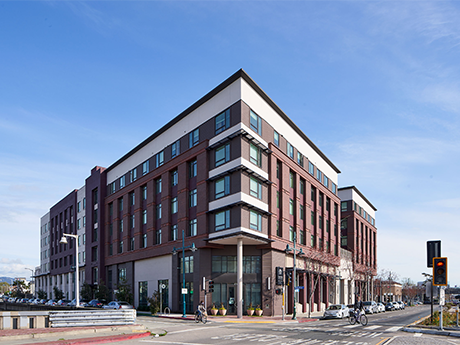

June 26, 2023 -Despite many regional and federal efforts, there is a staggering deficit of over seven million affordable and workforce housing units, according to the National Low Income Housing Coalition (NLIHC). For many, this can seem like an insurmountable challenge.
However, housing professionals and developers able and willing to navigate the sector’s many nuances have the opportunity to do good while doing well, tapping into insatiable demand while building out their long-term pipelines.
Recognizing the Scope of the Problem
Location is the most important factor for many builders when searching for and vetting new opportunities. While this often holds true in the market-rate sector, the sheer demand for accessible housing options makes affordable housing projects much more flexible.
National housing data brings this into stark focus, with recent reports showing that no single state in the U.S. has an adequate housing supply to meet the surging demand. According to the National Multifamily Housing Council (NMHC) and the National Apartment Association (NAA), the U.S. must build 4.3 million apartment residences by 2035 to meet skyrocketing demand for housing
We must remain keenly aware that the needs of low-income families, formerly unhoused individuals, veterans and other vulnerable groups vary from city to city. This means meeting them where they are to expand the range of opportunities available to them. As we like to say: A roof is just the beginning.
Creative Solutions Sought
The housing-first model has been the go-to method for combatting the ongoing housing crisis for decades. At a high level, this approach focuses on providing at-risk individuals and families — often those who are unhoused — with a permanent residence, followed by offering various social programs, such as addiction and mental health treatment or employment support and more.
Simply put, having a stable place to call home and much-needed social assistance is a proven one-two combo to overcome housing insecurity.
However, as increasing numbers of working- and middle-class households struggle to cover market-rate rents, demand for subsidized housing is skyrocketing. According to NMHC, the number of affordable housing units with rents less than $1,000 per month declined by 4.7 million from 2015 to 2020. This scarcity is exacerbated by the country’s growing unhoused population, the main benefactors of the housing-first movement.
With growing public outcry, local and state governments are mobilizing to address these deeply interconnected issues, rolling out new funding initiatives to catalyze activity in the often-overlooked affordable housing space. Developers are leveraging energy tax credits, components of the Inflation Reduction Act, to close funding gaps in affordable housing development.
Developer’s Guide to Securing Government Aid
Tapping into state and local government funding is essential to keeping affordable housing projects moving from groundbreaking to ribbon cutting. Developers must perform due diligence and fully examine their available resources, including state and federal low-income tax credits, tax exemptions, and project-based vouchers.
To ease the burden often placed squarely on affordable housing developers, the United States Department of the Treasury in July 2022 issued two new ways to provide affordable housing through Coronavirus State and Local Fiscal Recovery Funds (SLFRF) following President Joe Biden’s Housing Supply Action Plan.
The two additions increased developers’ flexibility to use SLFRF to fully finance long-term affordable housing loans and expand eligible affordable housing uses — a big win for developers as these funds were often difficult to secure.
That said, navigating the financing options remains challenging, especially for smaller and less experienced teams. Here are three tips for aspiring developers looking to finance their first affordable property.
(1) Find an experienced partner or consultant — Affordable housing financing is highly competitive and complicated. Having someone qualified on your team will help save time and other resources.
(2) Understand the risks — There are short-term and long-term risk factors when developing affordable housing. It will help if you are prepared to accept and adapt when the process does not go as planned.
(3) Create relationships — Affordable housing is a community of like-minded, service-driven individuals who are happy to share trade secrets and help support the industry.
— By Laura Hall, president and CEO of EAH Housing. Laura Hall joined EAH Housing in 2008 and became president and chief executive officer in 2018. She is responsible for real estate development, management, services, legislative advocacy and four regional offices throughout California and Hawaii.

